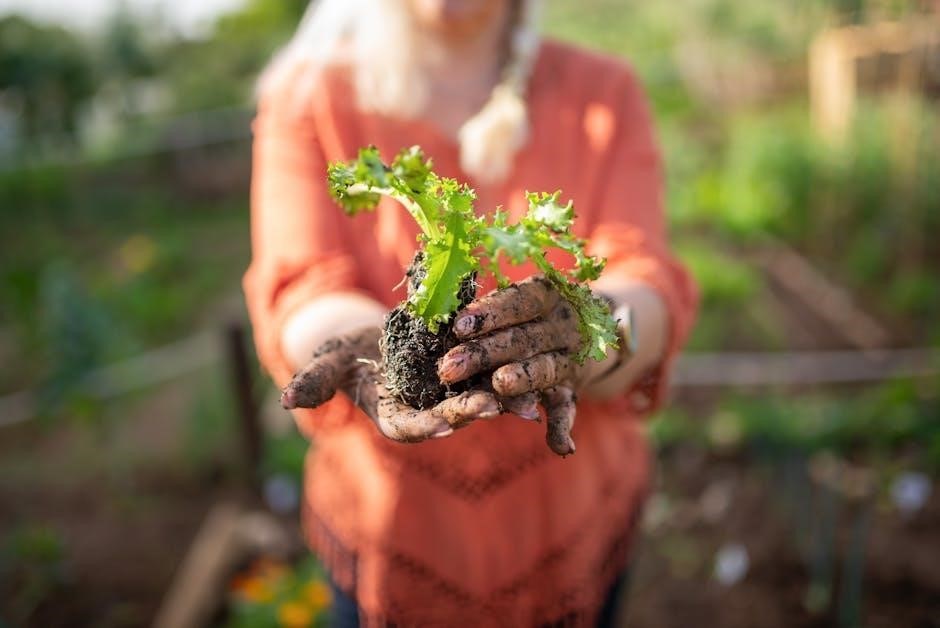
Welcome to the Zone 7 Vegetable Planting Guide, your essential resource for gardening success in USDA Hardiness Zone 7. This guide helps you maximize your growing season, offering tailored advice for spring, summer, fall, and winter crops. With a moderate climate and a long growing season, Zone 7 gardeners enjoy ample opportunities to grow a diverse range of vegetables. Whether you’re a seasoned gardener or just starting out, this guide provides the insights you need to thrive in Zone 7’s unique conditions.
1.1 Overview of USDA Hardiness Zone 7
USDA Hardiness Zone 7 covers regions with average annual minimum temperatures of 0°F to 10°F (-17.8°C to -12.2°C). This moderate climate includes areas like parts of California, Texas, and the Southeast. Zone 7’s relatively long growing season, with last frosts in early spring and first frosts in late fall, allows gardeners to grow a wide variety of vegetables. The zone’s moderate winters and warm summers create ideal conditions for both cool- and warm-season crops, making it a versatile region for year-round gardening success.
1.2 Importance of Understanding Your Growing Zone
Understanding your USDA Hardiness Zone is crucial for successful gardening, as it provides insights into your region’s climate and growing conditions. Zone 7’s moderate temperatures and long growing season offer unique opportunities, but also require tailored strategies. Knowing your zone helps you choose the right plants, avoid frost damage, and optimize planting schedules. This knowledge ensures you maximize your garden’s potential, reduce crop failures, and enjoy a bountiful harvest. Tailoring your practices to Zone 7’s specifics is key to a thriving, productive, and sustainable garden.
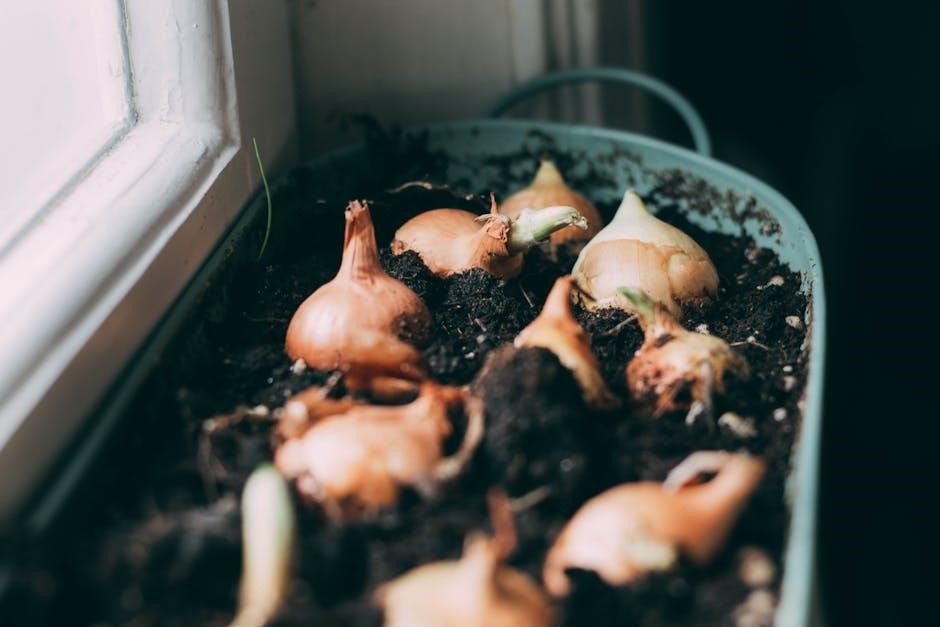
Understanding the Growing Season in Zone 7
Zone 7 enjoys a moderate climate with a long growing season, typically starting in early April and ending in late October. This extended period allows for multiple harvests and a wide variety of crops, making it ideal for both spring and fall gardens. Understanding the growing season in Zone 7 is essential for timing plantings correctly and maximizing yields throughout the year.
2.1 Last Frost Date in Zone 7
The last frost date in USDA Hardiness Zone 7 typically falls between late March and mid-April. This critical date determines when gardeners can safely plant warm-season crops outdoors. While the exact date varies depending on local weather patterns, microclimates, and elevation, it generally ranges from March 30th to April 15th. Gardeners should wait until after this date to plant heat-loving vegetables like tomatoes and peppers. Checking local weather forecasts before planting is always a good idea to ensure optimal growing conditions.
2.2 First Frost Date in Zone 7
In USDA Hardiness Zone 7, the first frost date typically occurs in mid-November, marking the end of the growing season for warm-season crops. Exact dates vary based on local microclimates and elevation, but gardeners should prepare for frost by mid-November. This date is crucial for harvesting crops before damage occurs. Cool-season crops can tolerate light frosts, but sensitive plants may need protection. Monitoring local weather forecasts can help gardeners plan accordingly, ensuring they protect or harvest crops before the first frost. This date also signals the start of planning for next year’s garden.
2.3 Average Growing Season Length
In USDA Hardiness Zone 7, the average growing season lasts approximately 7 months, from early April to mid-November. This extended period allows gardeners to grow a wide variety of crops, including both cool- and warm-season vegetables. The moderate climate and relatively long frost-free window make Zone 7 ideal for sequential planting and multiple harvests. By understanding the growing season’s duration, gardeners can plan effectively, ensuring optimal growth and productivity for their chosen plants. This lengthy season is a significant advantage for Zone 7 gardeners, offering ample time to enjoy fresh produce throughout most of the year.
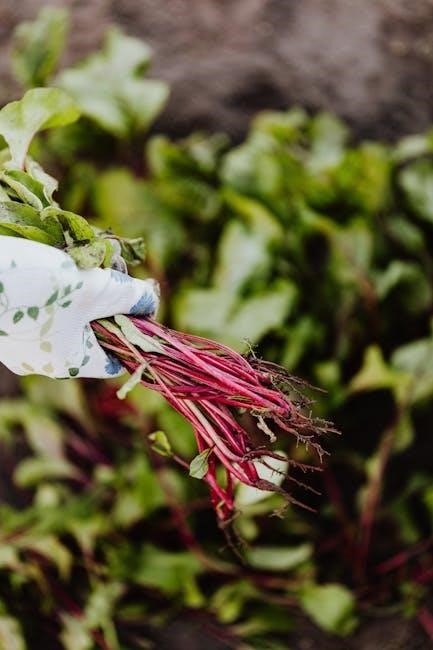
Spring Vegetable Planting in Zone 7
Zone 7 gardeners can start planting cool-season crops like spinach and lettuce in early March, with warm-season crops following after the last frost in April. Plan wisely for a bountiful spring harvest by considering weather patterns and soil readiness.
3.1 Cool-Season Crops to Plant in Early Spring
Cool-season crops thrive in Zone 7’s early spring. Plant spinach, lettuce, radishes, carrots, and asparagus as soon as the soil can be worked, typically in late February or early March. These crops prefer cooler temperatures and can tolerate light frosts, making them ideal for the transitional weather of spring. Broccoli, kale, and peas also do well when planted early, maturing before the heat of summer. Proper soil preparation and timely planting ensure a robust start to your spring garden, maximizing the growing season’s potential.
3.2 Warm-Season Crops to Plant After the Last Frost
After Zone 7’s last frost date, typically in early April, plant warm-season crops like tomatoes, peppers, eggplants, cucumbers, squash, corn, and green beans. These crops thrive in heat and require soil temperatures above 60°F for optimal germination. Tomatoes and peppers may need support, while cucumbers and squash benefit from trellises or mulch. Planting these crops after the frost ensures they avoid damage and mature during summer’s warmth. Proper spacing and full sun exposure are crucial for healthy growth and maximum yield.
3.3 Tips for Starting Seeds Indoors
Starting seeds indoors in Zone 7 is a great way to get a head start on the growing season. Begin 4-6 weeks before the last frost date, using high-quality potting mix and cell trays or small pots. Provide adequate light, such as grow lights, and keep temperatures consistent (around 70-80°F). Water gently but thoroughly, and avoid overcrowding to prevent disease. Harden off seedlings before transplanting outdoors. This method works well for crops like tomatoes, peppers, and eggplants, ensuring strong, healthy starts for your garden.
Summer Vegetable Planting in Zone 7
Zone 7’s warm summers are ideal for heat-tolerant vegetables like tomatoes, peppers, and okra. Plant after the last frost date, ensuring soil is well-prepared and watered consistently to prevent stress.
4.1 Heat-Tolerant Vegetables for Zone 7 Summers
Zone 7’s warm summers are perfect for growing heat-tolerant vegetables like tomatoes, peppers, okra, and eggplants. These crops thrive in high temperatures and can tolerate the region’s humidity. Additionally, southern favorites such as black-eyed peas, summer squash, and cucumbers excel in Zone 7’s climate. Plant these varieties after the last frost date to ensure optimal growth. Proper soil preparation and consistent watering are key to their success in the summer heat.
4.2 Managing Soil Health During Summer
Maintaining soil health is crucial during Zone 7’s hot summers. Incorporate organic matter like compost or well-rotted manure to improve soil structure and fertility. Mulching helps retain moisture, suppress weeds, and regulate soil temperature. Avoid over-tilling, as it can disrupt soil microbes and structure. Regularly test soil pH and nutrient levels, adjusting as needed to ensure optimal growing conditions. Proper soil care ensures robust plant growth and resilience against summer stress, promoting a thriving vegetable garden throughout the season.
4.3 Watering Strategies for Summer Vegetables
Efficient watering is key for summer vegetables in Zone 7. Aim for consistent moisture, providing about 1-2 inches of water per week through rain or irrigation. Use drip irrigation or soaker hoses to deliver water directly to roots, minimizing evaporation; Mulch around plants to retain soil moisture and reduce heat stress. Water deeply in the morning to allow plants to absorb moisture before evening. Avoid overwatering, which can lead to root rot and other issues. Monitor soil moisture by checking the top few inches of soil regularly.
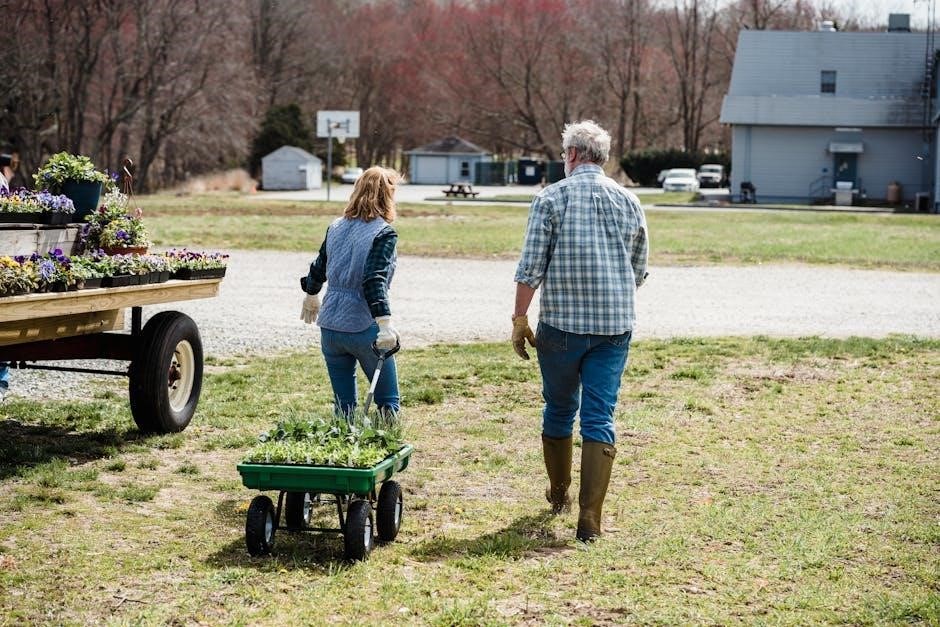
Fall Vegetable Planting in Zone 7
Fall offers a second chance for a bountiful harvest in Zone 7. Plant cool-season crops like broccoli, spinach, and carrots 8-10 weeks before the first frost date. This allows adequate time for maturation, ensuring a successful fall garden.
5.1 Cool-Season Crops for a Fall Harvest
Cool-season crops thrive in Zone 7’s fall weather, offering a fresh harvest before winter. Spinach, kale, and radishes mature quickly, while carrots, broccoli, and Brussels sprouts prefer cooler temperatures. Plant these crops 8-10 weeks before the first frost date to ensure proper maturation. Spinach and kale can tolerate light frosts, extending the harvest season. Radishes add a quick pop of color and flavor, while carrots and broccoli benefit from consistent moisture. Brussels sprouts, though slower to mature, reward patience with a hearty fall yield. Plan carefully to maximize your fall bounty in Zone 7.
5.2 Timing for Planting Fall Vegetables
Timing is crucial for a successful fall harvest in Zone 7. Plant cool-season crops 8-10 weeks before the first frost date, typically around late August to early September. Calculate the planting schedule based on each vegetable’s maturation period. For example, broccoli requires 14 weeks, while spinach needs only 6. Ensure the soil is workable and air temperatures are cooler. Consistent moisture is key during germination and growth. Monitor weather patterns to adjust planting dates, as frosts can vary. Proper timing ensures a bountiful fall harvest in Zone 7.
5.3 Protecting Plants from Early Frosts
Protecting your fall vegetables from early frosts is essential to extend the harvest season. Use row covers or lightweight blankets to shield plants from frost damage. Mulch around plants to retain soil warmth and insulate roots. Bring sensitive plants or containers indoors during cold snaps. Consider using cold frames or greenhouses for added protection. Monitor weather forecasts and harvest crops before frost occurs. These strategies help safeguard your fall garden and ensure a bounty of fresh produce well into the cooler months in Zone 7.

Winter Vegetable Planting in Zone 7
Welcome to winter gardening in Zone 7! Grow cold-hardy vegetables like kale, spinach, and Brussels sprouts. Use cold frames or greenhouses to protect crops from harsh weather.
6.1 Cold-Hardy Vegetables for Zone 7 Winters
Growing vegetables in Zone 7 during winter is feasible with cold-hardy varieties. Kale, spinach, and Brussels sprouts thrive in cooler temperatures. Broccoli and carrots also perform well. Plant these crops in late summer or early fall, allowing them to mature before frost. Root vegetables like radishes and turnips can be direct-sown in early winter. Use row covers or mulch to protect plants from extreme cold; These vegetables not only survive but often sweeten in flavor after light frosts, making Zone 7 winters a great time for fresh, nutritious harvests.
6.2 Using Cold Frames or Greenhouses
Cold frames and greenhouses are excellent tools for extending the growing season in Zone 7. They protect plants from harsh winter conditions, allowing gardeners to grow cold-hardy vegetables like kale, spinach, and broccoli year-round. Cold frames are ideal for small-scale gardening, while greenhouses offer more space and climate control. Both structures shield plants from frost and pests, enabling earlier spring planting and later fall harvesting. By managing temperature and ventilation, gardeners can ensure healthy growth and continuous production of fresh vegetables throughout the winter months in Zone 7.
6.3 Winter Gardening Tips and Tricks
Winter gardening in Zone 7 can be rewarding with the right strategies. Use row covers or mulch to protect plants from frost and retain soil moisture. Choose cold-hardy varieties like spinach, kale, and brussels sprouts, which thrive in cooler temperatures. Plant these crops in late summer or early fall to allow them to mature before the first frost. Succession planting and vertical gardening can also maximize space and productivity. Monitor soil health by adding organic matter, and consider using cold frames or greenhouses for extended growth. With proper care, Zone 7 gardeners can enjoy fresh vegetables year-round.

Companion Planting in Zone 7
Companion planting enhances growth and reduces pests naturally. Pair vegetables like tomatoes with basil or marigolds to deter nematodes. This method boosts yields and garden harmony.
7.1 Benefits of Companion Planting
Companion planting offers numerous benefits, including improved growth rates, enhanced flavor, and natural pest control. By pairing vegetables with complementary plants, gardeners can reduce the need for pesticides and fertilizers. For example, marigolds repel nematodes, while basil improves tomato flavor and deters pests. This method also promotes soil health and diversity, creating a balanced ecosystem. It encourages pollination and shade provision, optimizing space and resource use. These synergies make gardens more resilient and productive, aligning with sustainable gardening practices.
7.2 Popular Companion Planting Combinations
Zone 7 gardeners often use tried-and-true companion planting combinations to enhance growth and reduce pests. Tomatoes pair well with basil, which improves flavor and deters pests, while marigolds repel nematodes and attract beneficial insects. The “Three Sisters” method—planting corn, beans, and squash together—promotes soil fertility and structural support. Radishes and cucumbers thrive together, as radishes repel cucumber beetles. Nasturtiums and kale are another effective duo, with nasturtiums deterring aphids and other pests. These combinations create a balanced and resilient garden ecosystem, optimizing space and promoting healthy growth.
7.3 Avoiding Incompatible Plant Pairings
Some plants should not be grown together due to competition, shading, or pest attraction. For example, members of the Brassica family (like broccoli and kale) should not be planted near strawberries, as they can inhibit growth. Onions and garlic can stunt the growth of beans and peas. Additionally, tall plants like sunflowers should not overshadow smaller vegetables like lettuce or herbs. Avoid planting tomatoes near potatoes, as they can share diseases. Proper planning and spacing ensure a harmonious and productive garden. Researching plant compatibility is essential for maximizing yields in Zone 7 gardens.
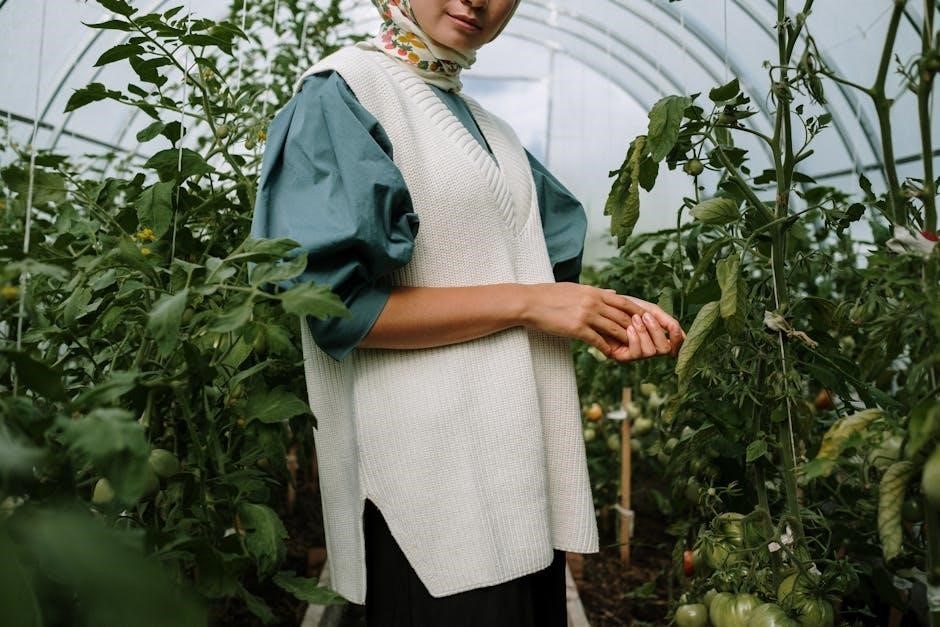
Soil Preparation for Zone 7 Vegetable Gardens
Proper soil preparation is crucial for a thriving vegetable garden in Zone 7. Test your soil type and amend it with organic matter to improve fertility and drainage. Ensure a balanced pH and incorporate fertilizers as needed to support healthy plant growth throughout the growing season.
8.1 Understanding Your Soil Type
Understanding your soil type is the first step in preparing your Zone 7 vegetable garden. Common soil types include clay, silt, loam, and sandy soils, each with unique properties. Clay soils retain moisture but drain poorly, while sandy soils drain quickly but lack nutrient retention. Loam, a balanced mix of clay, silt, and sand, is ideal for most vegetables. Knowing your soil type helps you determine its drainage, aeration, and nutrient-holding capacity, which are critical for root health and plant growth. Test your soil to identify its composition and pH level, then amend it accordingly for optimal results.
8.2 Testing and Amending Soil
Testing your soil is essential to determine its pH level and nutrient content. Use a soil test kit or send a sample to your local Cooperative Extension for analysis. Based on the results, amend your soil with organic matter like compost or well-rotted manure to improve structure and fertility. For acidic soils, add lime, and for alkaline soils, incorporate sulfur or peat moss. Avoid over-amending, as this can harm plant growth. Regular testing and amending ensure your soil remains balanced, promoting healthy root development and robust vegetable production in Zone 7 gardens.
8.3 Organic Matter and Fertilizers
Incorporating organic matter like compost, manure, or leaf mold enhances soil fertility and structure, benefiting vegetable growth in Zone 7. Use a balanced fertilizer (e.g., 10-10-10) at planting time, following package instructions. Side-dress with nitrogen-rich fertilizers for leafy greens or fruiting crops mid-season. Avoid over-fertilizing, as it can harm plants and soil health. Natural alternatives like fish emulsion or well-rotted manure provide slow-release nutrients, promoting sustainable gardening practices. Regularly adding organic matter ensures long-term soil productivity and supports robust vegetable yields.
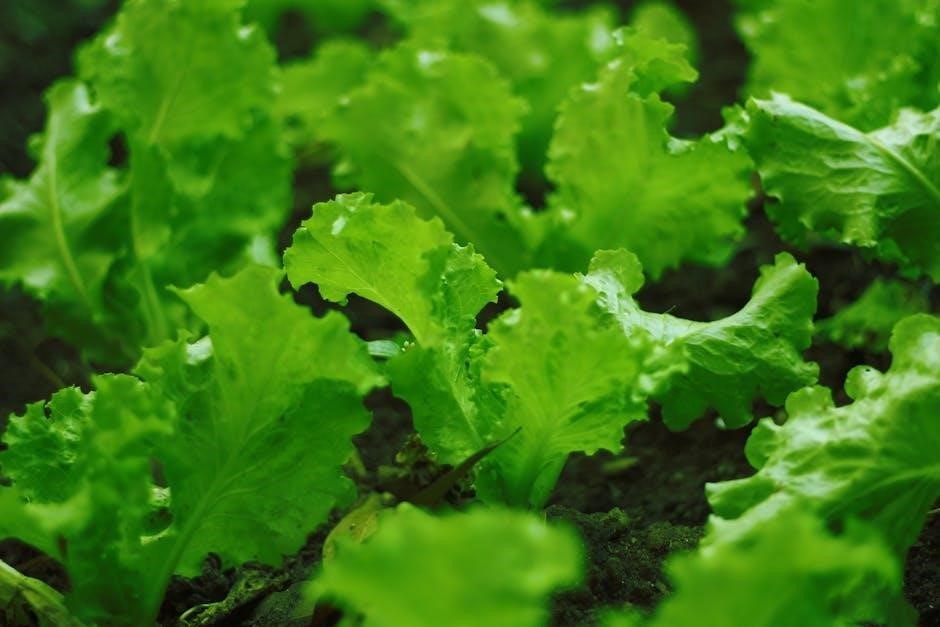
Tips for Extending the Growing Season
Maximize your harvest by using row covers, cold frames, and succession planting. These simple techniques help protect plants from frost and ensure continuous vegetable growth throughout the year.
9.1 Using Row Covers and Mulch
Row covers and mulch are essential tools for extending the growing season in Zone 7. Row covers trap warmth, protecting plants from frost damage, while mulch retains soil moisture and suppresses weeds. Apply row covers before expected frosts and use organic mulch like straw or bark chips around plants. These methods improve soil health and regulate temperature fluctuations, allowing gardeners to grow cool-season crops like spinach and kale longer into the fall. They also help warm-season crops thrive by maintaining consistent soil conditions.
9.2 Planting Succession Crops
Planting succession crops is a key strategy for maximizing yields in Zone 7’s long growing season. Start with cool-season crops like lettuce, spinach, and radishes in early spring. After harvesting, replant the same beds with warm-season crops such as tomatoes or peppers. In late summer, sow another round of cool-season crops like spinach or kale for a fall harvest. By staggering planting dates and choosing varieties with shorter maturity times, gardeners can enjoy a continuous supply of fresh produce. Plan carefully to ensure proper spacing and timing for each succession crop.
9.3 Incorporating Vertical Gardening
Incorporating vertical gardening into your Zone 7 vegetable garden maximizes space and productivity. Use trellises, arbors, or wall-mounted systems to grow vining plants like cucumbers, peas, and tomatoes. This method not only saves ground space but also improves air circulation, reducing disease risks. Vertical gardening also allows for better light penetration and easier pest management. Herbs like mint or rosemary can thrive in vertical planters, adding diversity to your garden; This technique is especially useful for small gardens or urban spaces, ensuring a bountiful harvest even in limited areas.
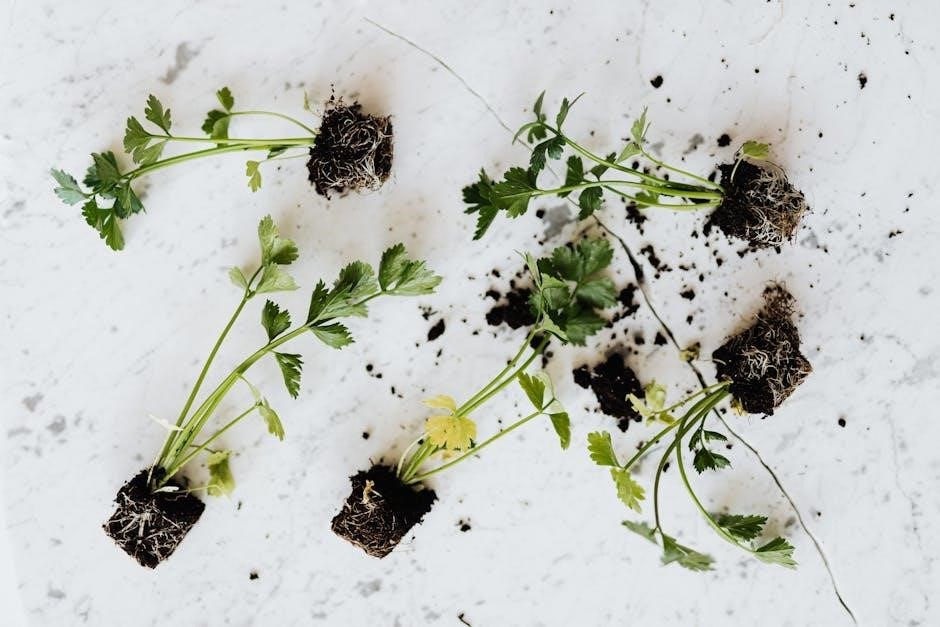
Common Pests and Diseases in Zone 7
Zone 7 gardens often face challenges from pests like aphids, hornworms, and whiteflies, as well as diseases such as powdery mildew and root rot. Regular monitoring and organic controls can help prevent infestations and infections, ensuring healthy plant growth.
10.1 Identifying Common Garden Pests
In Zone 7, common garden pests include aphids, hornworms, and whiteflies. Aphids are small, soft-bodied insects found on stems and leaves, while hornworms are large, green caterpillars that damage plants quickly. Whiteflies appear as tiny, winged insects around foliage. Regularly inspect plants, especially undersides of leaves, for eggs or damage. Monitoring for holes, discoloration, or sticky residue can help identify infestations early. Knowing these signs allows gardeners to address issues promptly, protecting their crops from significant harm.
10.2 Managing Diseases in Zone 7
In Zone 7, common vegetable diseases include powdery mildew, root rot, and leaf spot. These issues often arise from excessive moisture, poor air circulation, or contaminated soil. To manage diseases, practice crop rotation, remove infected plants, and improve drainage. Water plants at the base to avoid splashing, which can spread pathogens. Applying fungicides or neem oil can help control outbreaks. Regularly inspect plants for signs of disease, and treat promptly to prevent spread. Healthy soil and proper sanitation are key to maintaining disease-free crops in Zone 7 gardens.
10.4 Integrated Pest Management Strategies
Integrated Pest Management (IPM) combines physical, cultural, biological, and chemical controls to manage pests effectively. In Zone 7, encourage beneficial insects like ladybugs and parasitic wasps to naturally control pests. Use barriers and row covers to prevent infestations. Practice companion planting to deter pests, such as marigolds repelling nematodes. Crop rotation and sanitation also reduce pest risks. Chemical treatments should be a last resort, targeting specific pests while minimizing harm to beneficial organisms. Regular monitoring ensures early detection and timely intervention, promoting a balanced ecosystem and sustainable gardening practices.
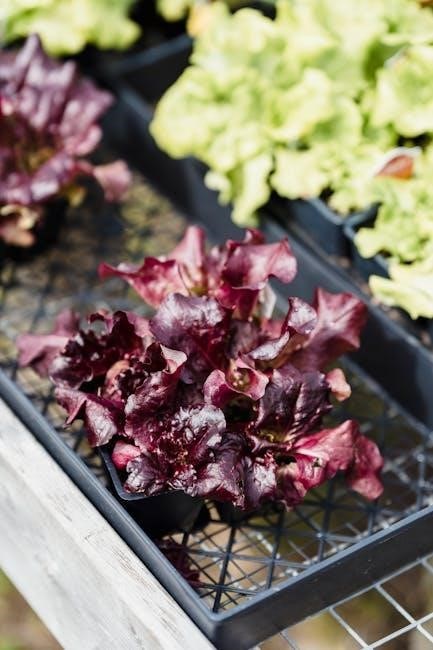
Using a Planting Calendar for Zone 7
A planting calendar helps Zone 7 gardeners optimize growing timelines, ensuring seeds are started and transplanted at ideal times for successful growth and harvest.
11.1 Creating a Personalized Planting Schedule
Creating a personalized planting schedule for Zone 7 allows gardeners to optimize growth based on specific weather patterns and soil conditions. Start by noting the last frost date (late March to early April) and first frost date (mid-November). Incorporate cool-season crops like broccoli and spinach in early spring, followed by warm-season crops such as tomatoes and peppers after the last frost. Consider starting seeds indoors 4-6 weeks before the last frost date for a head start. Adjust timelines for soil preparation and direct sowing based on your region’s microclimate. This tailored approach ensures maximum yield and success for your Zone 7 garden.
11.2 Using Online Resources and Apps
Online resources and apps are invaluable tools for Zone 7 gardeners, offering detailed planting charts, frost date calculators, and variety recommendations. Websites like the Farmer’s Almanac and apps such as Garden Plan Pro provide personalized planting schedules based on your ZIP code. These tools help you track optimal planting times for specific vegetables, ensuring you maximize your growing season. Additionally, platforms like Seed Savers Exchange offer seed recommendations tailored to Zone 7’s climate. By leveraging these resources, gardeners can make informed decisions and achieve better crop success.
11.3 Adjusting for Weather Variations
Weather variations can significantly impact your planting schedule in Zone 7. Monitor local forecasts to adjust planting dates, especially for frost-sensitive crops. If unseasonal cold snaps or heatwaves occur, protect plants with row covers or shading. Adjust watering schedules based on rainfall and soil moisture levels. Flexibility is key; delaying or advancing planting by a week can help mitigate weather-related risks. Keep soil temperature in mind, as it affects germination and growth. Regularly updating your planting calendar ensures you stay aligned with current conditions, maximizing your garden’s success.
12.1 Recap of Key Planting Strategies
Zone 7 gardeners should plant cool-season crops in early spring and late summer for fall harvest. Warm-season crops thrive after the last frost in April. Soil preparation and using row covers can extend the growing season. Timing plantings according to frost dates ensures optimal growth. Companion planting and crop rotation improve yields. Keep a planting calendar and adjust for weather variations. With these strategies, Zone 7 gardeners can enjoy fresh produce spring through fall, making the most of their moderate climate and long growing season. Happy gardening!
12.2 Encouragement for New Gardeners
Welcome to the world of gardening in Zone 7! Growing your own vegetables can be incredibly rewarding, and Zone 7’s moderate climate makes it an ideal place to start. Don’t be intimidated if you’re new—every gardener begins somewhere. Start small, focus on a few easy-to-grow plants like tomatoes or lettuce, and gradually expand as you gain confidence. Good soil preparation and following a planting calendar are key. Remember, mistakes are part of the learning process, and every season brings new opportunities to improve. Join online forums or local gardening groups for support and tips. Happy gardening, and enjoy the joy of harvesting your own fresh produce!